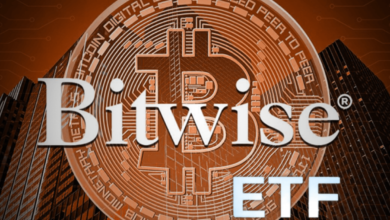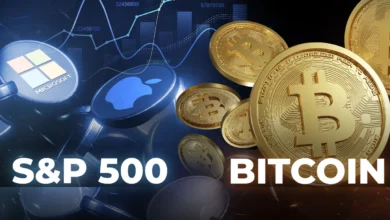
Bitcoin Trading Platform News Latest Updates Regulatory Changes & Market Developments 2025
The cryptocurrency ecosystem continues to evolve at breakneck speed, making bitcoin trading platform news one of the most closely watched sectors in digital finance. As we progress through 2025, significant developments are reshaping how traders access, secure, and interact with Bitcoin markets. From President Trump’s executive order on January 23, 2025, titled “Strengthening American Leadership in Digital Financial Technology” to major platform updates and security enhancements, the bitcoin trading platform news landscape has never been more dynamic.
Understanding the latest bitcoin trading platform news is crucial for both novice and experienced traders navigating this rapidly changing market. The current environment presents unprecedented opportunities and challenges, with regulatory clarity emerging alongside technological innovations that are transforming the trading experience.
Breaking Bitcoin Trading Platform News Major 2025 Developments
The bitcoin trading platform news cycle has been particularly active in 2025, with several game-changing developments reshaping the industry landscape. Platform consolidation continues to accelerate, with major acquisitions and partnerships creating more robust, feature-rich ecosystems for Bitcoin traders.
Regulatory compliance has emerged as a key differentiator among platforms, with those demonstrating proactive adherence to evolving requirements gaining significant competitive advantages. On February 21, 2025, the SEC informed Robinhood Crypto that it would not move forward with an enforcement action, signaling a potential shift toward more collaborative regulatory relationships.
The introduction of institutional-grade features has transformed how platforms serve professional traders and corporate clients. Advanced order types, sophisticated risk management tools, and enhanced API capabilities are becoming standard offerings as platforms compete for high-volume users.
Platform Acquisition Activity
The M&A landscape in the bitcoin trading space has intensified significantly, with established financial services companies acquiring crypto-native platforms to expand their digital asset capabilities. These acquisitions are driving innovation while providing smaller platforms with the resources needed to enhance security and compliance infrastructure.
Strategic partnerships between traditional banks and crypto exchanges are creating new pathways for mainstream Bitcoin adoption. These collaborations enable seamless fiat-to-crypto conversions and provide institutional clients with familiar banking interfaces for their cryptocurrency operations.
Cross-border expansion has accelerated as platforms leverage regulatory clarity in key jurisdictions to establish international operations. This global expansion is increasing competition while providing users with more choices and better services across different geographic markets.
Regulatory Updates Transforming Bitcoin Trading Platforms
The regulatory environment for Bitcoin trading platforms has undergone a dramatic transformation in 2025, with clearer frameworks emerging across major jurisdictions. Around 12% of UK adults now own or have owned crypto, up from just 4% in 2021, driving governments to implement comprehensive regulatory frameworks that protect consumers while enabling innovation.
In 2025, anti-money laundering (AML) and countering the financing of terrorism (CFT) requirements will continue to be a core element of the regulatory framework for cryptocurrency businesses operating in the United States. These requirements standardize platform operations and improve user protection across the industry.
The shift from enforcement-focused to collaboration-based regulation has created a more predictable operating environment for platforms. This change enables long-term strategic planning and encourages innovation while maintaining necessary consumer protections.
Impact on Platform Operations
Compliance costs have initially increased as platforms implement new systems and procedures, but standardized regulations are expected to reduce long-term operational expenses. Automated compliance monitoring and reporting systems are becoming essential infrastructure components for successful platforms.
User onboarding processes have been streamlined through improved KYC procedures that balance security requirements with user experience. Modern identity verification systems can complete background checks in minutes rather than days, significantly improving platform accessibility.
On May 7, 2025, the OCC published Interpretive Letter #1184 affirming that national banks and federal savings associations may provide and outsource cryptocurrency custody and execution services on behalf of customers, opening new opportunities for platform partnerships with traditional financial institutions.
Global Regulatory Harmonization
International cooperation on cryptocurrency regulation is increasing, with regulatory bodies sharing best practices and coordinating enforcement efforts. This cooperation is creating more consistent standards across jurisdictions, reducing compliance complexity for multi-national platforms.
The European Union’s Markets in Crypto-Assets (MiCA) regulation continues to influence global standards, with other jurisdictions adopting similar frameworks for comprehensive crypto asset oversight. This harmonization benefits both platforms and users by creating predictable regulatory environments.
Emerging markets are developing their regulatory frameworks, often learning from the experiences of early-adopting jurisdictions. These new frameworks are generally more comprehensive and user-friendly than earlier regulatory attempts.
Security Innovations in Bitcoin Trading Platforms

Security remains the top priority for Bitcoin trading platforms, with 2025 seeing significant advances in protection mechanisms and threat detection capabilities. Multi-signature wallet technology has evolved to provide a better balance between security and operational efficiency, enabling platforms to protect user funds while maintaining fast withdrawal processing.
Advanced authentication systems now incorporate biometric data, hardware tokens, and behavioral analysis to create multi-layered security architectures. These systems can detect unusual access patterns and automatically trigger additional verification steps when suspicious activity is identified.
Insurance coverage for digital assets has expanded significantly, with some platforms now offering protection that rivals traditional financial institutions. Comprehensive insurance policies cover various risk scenarios, from cyber attacks to operational failures, providing users with additional confidence in platform security.
Emerging Threat Detection
Artificial intelligence and machine learning systems are revolutionizing how platforms detect and respond to security threats. These systems can analyze vast amounts of transaction data in real-time, identifying patterns that might indicate fraudulent activity or attempted breaches.
Social engineering attack prevention has become a major focus area, with platforms implementing user education programs and technical safeguards to protect against phishing attempts and other manipulation tactics. These initiatives have significantly reduced successful social engineering attacks against platform users.
Zero-trust security architectures are being implemented by leading platforms, ensuring that every access request is thoroughly verified regardless of the user’s location or previous authentication status. This approach provides enhanced protection against both external threats and insider risks.
Cold Storage Evolution
Cold storage solutions have advanced significantly, with platforms implementing sophisticated key management systems that can facilitate rapid withdrawals while maintaining the highest security standards. These systems use advanced cryptographic techniques to enable secure, automated fund management.
Multi-party computation protocols are enabling new approaches to private key management, allowing platforms to maintain security while improving operational efficiency. These protocols can perform cryptographic operations without exposing private keys, reducing the risk of key compromise.
Hardware security modules have become standard components of platform security infrastructure, providing tamper-resistant environments for critical cryptographic operations. These specialized devices can detect physical tampering attempts and automatically destroy sensitive data when threats are identified.
Market Trends and Trading Volume Analysis
Bitcoin trading volumes across major platforms have shown remarkable resilience throughout 2025, despite periodic market volatility. Analysts remain optimistic about Bitcoin’s 2025 trajectory with predictions ranging from $160,000 to $200,000, driven by growing risk appetite among investors thanks to expectations of improving US financial policy, contributing to sustained trading interest.
Institutional trading activity has continued to grow, with corporate treasuries and investment funds contributing to increased platform volumes. The approval of additional Bitcoin investment products has provided new avenues for institutional participation in Bitcoin markets.
Retail trading patterns have evolved toward more sophisticated strategies, with dollar-cost averaging and automated trading tools gaining popularity among individual investors. This shift has contributed to more consistent trading volumes and reduced volatility in platform usage patterns.
Platform-Specific Performance Metrics
Leading platforms have reported varying growth rates based on their ability to attract and retain active traders. Platforms offering the most comprehensive feature sets and competitive fee structures have shown the strongest volume growth throughout 2025.
The geographic distribution of trading activity has shifted as regulatory environments have clarified in different regions. Asian markets continue to represent significant portions of global Bitcoin trading volume, while North American and European markets have shown steady expansion.
Fee competition among platforms has intensified, with many exchanges offering maker-taker pricing models and volume-based discounts to attract high-frequency traders. This competition has generally benefited users while requiring platforms to find alternative revenue streams through premium services.
Trading Behavior Evolution
Algorithmic trading has become more accessible to retail users, with platforms offering simplified automation tools that don’t require programming expertise. These tools enable users to implement sophisticated trading strategies while managing risk through predefined parameters.
Mobile trading has continued to grow, with platform mobile applications now offering feature parity with desktop versions. Advanced charting tools, real-time notifications, and one-touch trading capabilities have made mobile platforms viable for serious traders.
Social trading features are gaining traction, allowing users to follow and potentially copy the strategies of successful traders. These features combine social networking elements with trading functionality, creating new ways for users to learn and potentially profit from market movements.
Technology Infrastructure Developments
Platform technology infrastructure has undergone significant upgrades throughout 2025, with major exchanges investing heavily in scalability and performance improvements. Advanced trading engines can now handle massive transaction volumes without degradation, ensuring reliable service during periods of high market activity.
API improvements have enabled better integration with third-party tools and services, allowing professional traders to connect their preferred analysis and automation tools directly to their trading accounts. These integrations have expanded the ecosystem of services available to Bitcoin traders.
Cloud infrastructure adoption has accelerated, with platforms leveraging distributed computing resources to improve reliability and reduce latency. Multi-region deployments ensure that users can access platforms quickly regardless of their geographic location.
Blockchain Integration Advances
Layer 2 scaling solutions are being integrated into major platforms, enabling faster and cheaper Bitcoin transactions for users. Lightning Network integration has become increasingly common, allowing platforms to offer instant, low-cost transfers between users. Smart contract functionality is being explored by some platforms to enable more sophisticated trading products and services.
These capabilities could enable automated market making, complex derivatives, and other advanced financial products. Cross-chain interoperability solutions are being developed to enable Bitcoin trading across multiple blockchain networks. These solutions could significantly expand the utility and accessibility of Bitcoin trading platforms.
Performance Optimization
Database optimization has enabled platforms to handle larger datasets more efficiently, improving user experience through faster account loading and transaction history access. Advanced indexing and caching strategies have reduced query response times significantly. Content delivery networks are being utilized to optimize platform performance for users in different geographic regions.
These networks ensure that trading interfaces load quickly and reliably regardless of user location. Real-time data processing capabilities have been enhanced to provide users with up-to-the-second market information and account updates. These improvements are particularly important for active traders who rely on current information for decision-making.
Future Outlook and Industry Predictions

The future of Bitcoin trading platforms appears increasingly bright as regulatory frameworks solidify and technological capabilities continue to advance. Platforms are positioning themselves for continued growth by investing in infrastructure, expanding service offerings, and building strategic partnerships with traditional financial institutions.
Integration with central bank digital currencies represents a significant opportunity as governments worldwide explore digital currency initiatives. Platforms capable of seamlessly facilitating trading between Bitcoin and CBDCs may gain substantial competitive advantages in the coming years.
The evolution toward hybrid models that combine centralized efficiency with decentralized principles is likely to accelerate. These models could provide users with the best of both worlds: fast, reliable trading execution with enhanced privacy and control over their assets.
Technological Innovation Trajectories
Artificial intelligence applications in trading platform operations are expected to expand significantly, improving everything from fraud detection to personalized user experiences. Machine learning algorithms will enable more sophisticated risk management tools and automated trading strategies.
Quantum computing considerations are beginning to influence platform security planning, with leading exchanges exploring quantum-resistant cryptographic methods. While quantum threats remain theoretical, proactive security planning is becoming a competitive differentiator.
Virtual and augmented reality interfaces may emerge as platforms seek to create more immersive trading experiences. These technologies could enable new ways of visualizing market data and interacting with trading tools.
Market Evolution Expectations
Platform consolidation is expected to continue, with successful exchanges acquiring specialized service providers to create comprehensive financial ecosystems. These integrated platforms will offer everything from basic trading to advanced portfolio management and financial planning services. Regulatory clarity will likely enable new product categories and service offerings that are currently restricted or unavailable.
Options trading, lending services, and complex derivatives may become more widely available as regulatory frameworks mature. Global adoption of Bitcoin trading platforms is expected to accelerate as infrastructure improves and regulatory barriers diminish. Emerging markets may see particularly rapid growth as local populations gain access to international Bitcoin markets.
Platform Selection Criteria for 2025
Choosing the right Bitcoin trading platform in 2025 requires careful consideration of multiple factors beyond basic trading functionality. Security track record has become the most important consideration, with users prioritizing platforms that have demonstrated consistent protection of user funds and data.
Regulatory compliance status varies significantly between platforms, with those operating in multiple jurisdictions often providing better long-term stability and growth prospects. Platforms with clear regulatory approval in major markets offer users greater confidence and protection.
Feature richness and user experience quality have become key differentiators as platforms compete for market share. Advanced charting tools, multiple order types, and intuitive interfaces are no longer luxury features but essential requirements for competitive platforms.
User Experience Considerations
Customer support quality has emerged as a critical factor in platform selection, with users prioritizing exchanges that offer responsive, knowledgeable assistance. 24/7 support availability and multiple communication channels have become standard expectations. Educational resources and market analysis tools help users make informed trading decisions and improve their market understanding.
Platforms offering comprehensive educational content and professional market insights often build stronger user loyalty. Mobile application quality has become essential as more users prefer to trade on mobile devices. Full-featured mobile apps with reliable performance and intuitive design are necessary for modern trading platforms.
Cost Structure Analysis
Fee transparency and competitiveness remain important factors in platform selection, but users are increasingly willing to pay slightly higher fees for superior security and service quality. Hidden fees and complex pricing structures are major deterrents for informed users. Deposit and withdrawal options affect platform usability, with users preferring multiple funding methods and fast processing times.
Platforms supporting various payment methods and offering competitive withdrawal fees have advantages in user acquisition and retention. Advanced trading tools and premium services are increasingly important for serious traders, with many platforms offering tiered service levels. Professional traders often prioritize platforms that provide institutional-grade tools and services.
Also Read: Bitcoin Trading Platform News Latest Updates Regulatory Changes & Market Developments 2025
Conclusion
The bitcoin trading platform news landscape in 2025 represents a maturing industry that has successfully navigated significant regulatory and technological challenges. From groundbreaking regulatory developments like Trump’s executive order on digital financial technology to platform security innovations and institutional adoption milestones, the foundation for continued growth has been firmly established.
The emphasis on regulatory compliance, security enhancements, and user experience improvements has created a more trustworthy and accessible environment for Bitcoin trading. Platforms that have proactively adapted to regulatory requirements while investing in technology infrastructure are well-positioned to capitalize on continued mainstream adoption.







